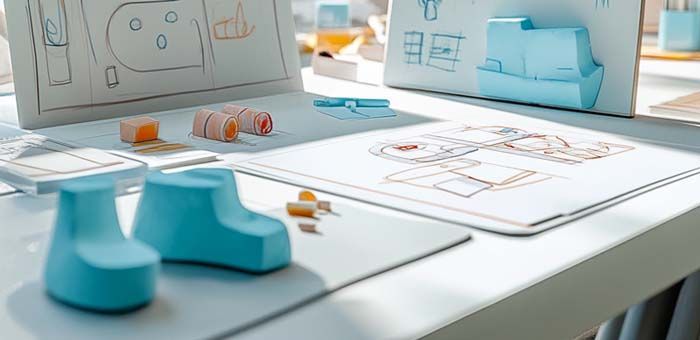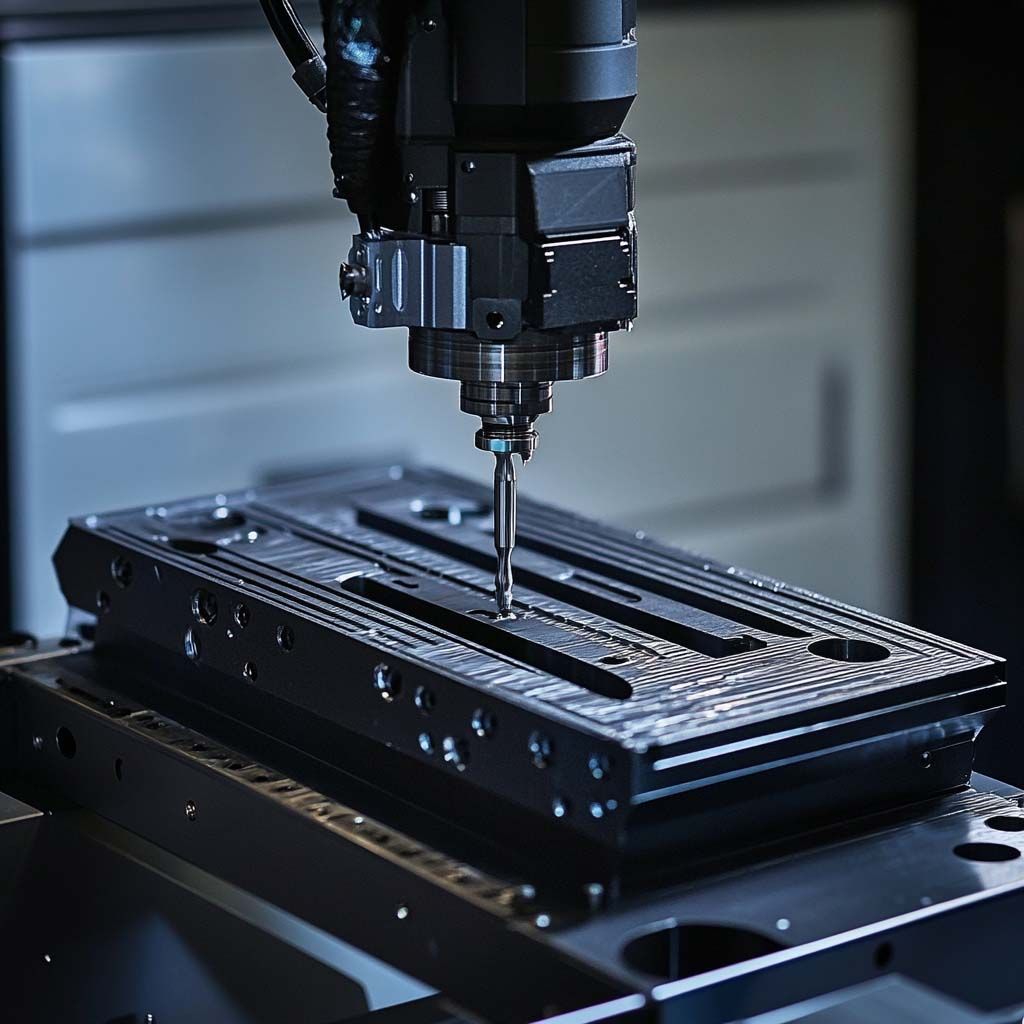
The Power of 3D Printing in Machine Fixturing | Rev3D Services in CT
The Power of 3D Printing in Creating Fixtures for Machining and Manufacturing
The world of machining and manufacturing has seen transformative technological advancements over the past few decades, and one of the most impactful innovations is 3D printing. This versatile process has revolutionized industries across the board, offering increased efficiency, flexibility, and cost-effectiveness. One area where 3D printing has truly demonstrated its potential is in the creation of fixtures used in machining and manufacturing.
What are Fixtures in Machining and Manufacturing?
Fixtures are specialized tools or devices used to hold and support a workpiece in place while machining operations are being performed. They ensure the workpiece is positioned correctly, securely, and consistently, which is crucial for achieving precise results. Whether it’s in milling, drilling, grinding, or turning, fixtures provide the stability and repeatability needed for high-quality production.
Fixtures are typically made from materials like metal or hardened steel due to the need for durability and strength. However, the traditional process of designing and creating these fixtures can be time-consuming and expensive. This is where 3D printing comes into play, offering a host of benefits that streamline the production process.
The Advantages of 3D Printing for Fixtures
1. Rapid Prototyping and Design Flexibility
Traditional fixture manufacturing involves designing the fixture, creating detailed drawings, and sending them to a machine shop for fabrication. This process can take weeks or even months, depending on the complexity of the fixture. In contrast, 3D printing offers rapid prototyping capabilities, allowing engineers to quickly design and produce fixtures in a matter of hours.
This rapid turnaround is particularly beneficial in the early stages of production, where multiple iterations and adjustments may be required. 3D printing allows manufacturers to create and test different fixture designs, speeding up the overall development cycle and reducing time to market.
2. Cost-Effectiveness
The cost of manufacturing traditional fixtures can be high, especially when complex geometries are involved. Machining these parts requires specialized tools and significant labor, which can drive up the cost.
With 3D printing, however, the need for expensive tooling is eliminated. The digital nature of 3D printing means that fixtures can be produced directly from CAD files, without the need for additional setup or machine time. For low-volume runs or custom designs, 3D printing becomes an incredibly cost-effective option.
3. Customization and Complexity
3D printing opens up new possibilities in terms of fixture design complexity. Traditional manufacturing methods often struggle with intricate or non-standard geometries. However, 3D printing is ideal for producing complex shapes that would be nearly impossible or prohibitively expensive to machine.
Manufacturers can create fixtures with internal channels, lattice structures, or unique contours that precisely fit the shape and needs of a particular workpiece. Customization becomes effortless, and this flexibility allows for tailored solutions that improve the overall manufacturing process.
4. Lightweight and Strong Materials
With the development of advanced 3D printing materials, it’s possible to create fixtures that are both lightweight and strong enough to handle the demands of machining. Materials like high-strength plastics, carbon fiber composites, and even metal powders used in 3D printing ensure that the final fixtures can withstand heavy loads while reducing the overall weight.
This is particularly advantageous in industries where fixture weight is a critical factor, such as aerospace or automotive manufacturing. Lighter fixtures also contribute to faster machine cycles, enhancing overall efficiency.
5. Reduced Lead Times and Increased Efficiency
Lead time is one of the most significant challenges in traditional fixture manufacturing. From design to fabrication, the entire process can take days or even weeks. This delay can have a cascading effect on production schedules and overall factory efficiency.
By contrast, 3D printing dramatically reduces lead times. Fixtures can be designed, optimized, and printed in a fraction of the time, allowing manufacturers to quickly adapt to changing production demands. In industries with tight deadlines or high-mix, low-volume production, the ability to produce fixtures quickly gives manufacturers a competitive edge.
6. Low-Volume Production and On-Demand Manufacturing
One of the most compelling reasons to use 3D printing for fixtures is the ability to produce low-volume runs without the need for expensive tooling or molds. Traditional fixture production often requires significant upfront investment for high-volume runs, which may not be cost-effective for small batch sizes.
3D printing allows manufacturers to produce fixtures on-demand and in small quantities, which is ideal for industries where the need for specialized or custom fixtures is infrequent. This on-demand capability reduces waste and optimizes resource allocation.
7. Reduced Waste and Sustainability
Traditional machining methods often generate significant amounts of material waste due to the subtractive nature of the process. With 3D printing, material is only added where needed, minimizing waste and reducing the environmental impact.
Additionally, many 3D printing materials are recyclable, contributing to a more sustainable production process. As industries continue to prioritize sustainability, 3D printing offers an eco-friendly alternative to traditional manufacturing methods.
Real-World Applications of 3D Printed Fixtures
The benefits of 3D printing for fixtures are already being realized in various industries:
- Aerospace: Aerospace companies use 3D printed fixtures to hold complex components in place during assembly, reducing weight and improving precision. Lightweight, durable fixtures are essential in this highly demanding industry.
- Automotive: In automotive manufacturing, 3D printed fixtures are used for custom parts that require precise alignment during machining. The ability to produce low-volume, highly specialized fixtures at a lower cost has a significant impact on overall production efficiency.
- Medical: In medical device manufacturing, custom fixtures are necessary to handle delicate and intricate parts. 3D printing allows for the rapid production of these custom tools, ensuring both precision and cost savings.
- Tooling and Prototyping: Industries focused on prototyping benefit from 3D printed fixtures to secure prototype parts in place for testing and analysis. The ability to quickly create multiple fixture variations speeds up the overall prototyping process.
Conclusion
3D printing has emerged as a game-changer in the world of machining and manufacturing, particularly when it comes to the creation of fixtures. With its ability to offer rapid prototyping, cost-effective production, customization, and sustainability, 3D printing is reshaping how manufacturers approach fixture design and production. As industries continue to embrace this technology, the future of manufacturing will undoubtedly be more flexible, efficient, and cost-effective, with 3D printing playing a pivotal role in shaping the way fixtures are created and used.
By integrating 3D printing into their operations, manufacturers can unlock new levels of productivity, reduce costs, and enhance their overall ability to innovate.
You might also like



Book a Service Today
We will get back to you as soon as possible
Please try again later

ABOUT
Our team expertise in Industrial Design, Engineering and Prototyping can take a seed of an idea and develop it into a well thought out and fully developed product.
MENU
STAY CONNECTED
Join our newsletter and find out more
Contact Us
Thank you for submitting your info! We're so happy to have you on board :)
Please try again later
All Rights Reserved | Rev 3D Services
Website powered by ADS NEEDED
